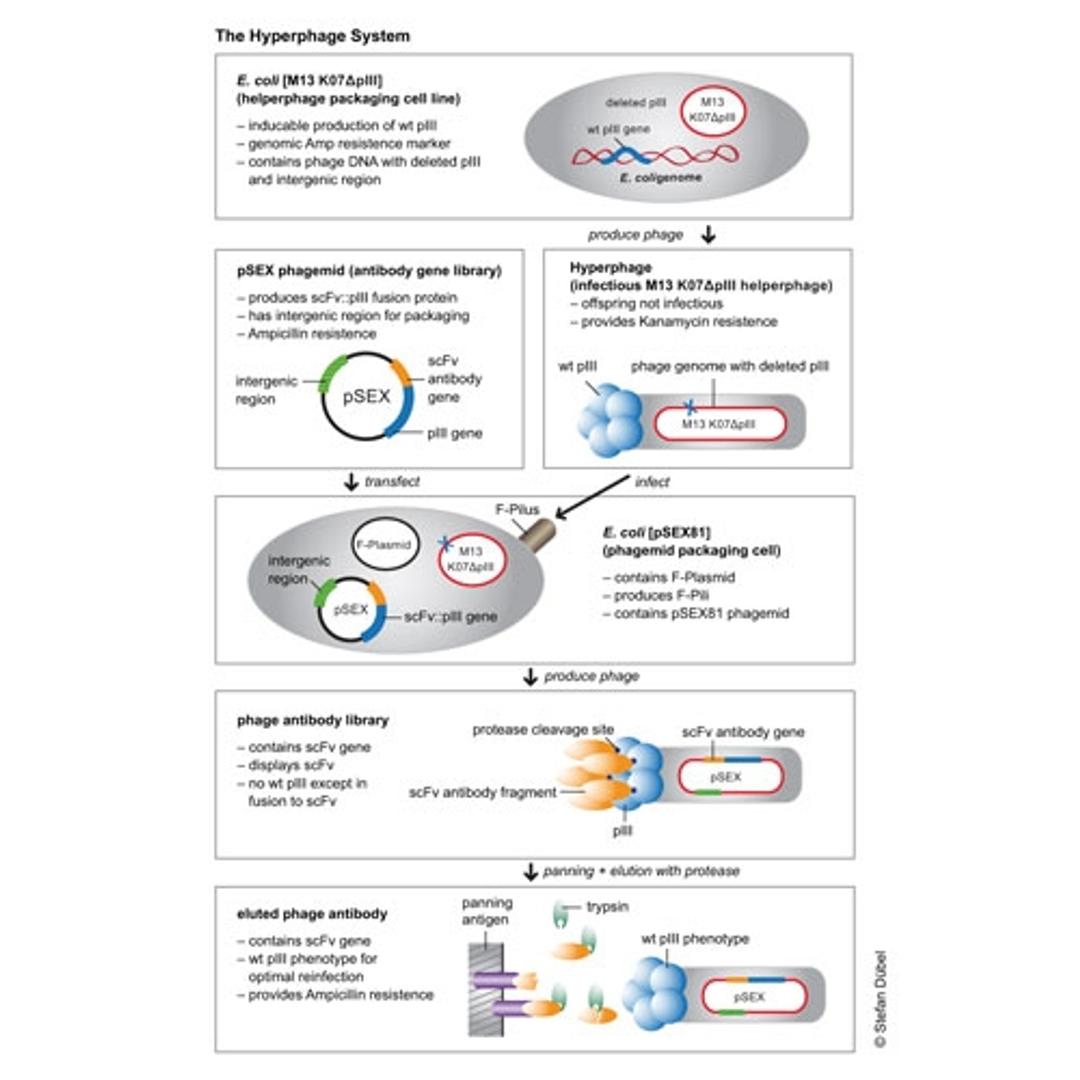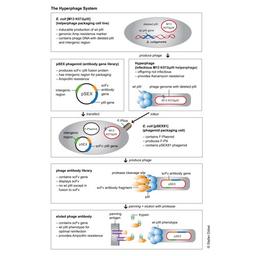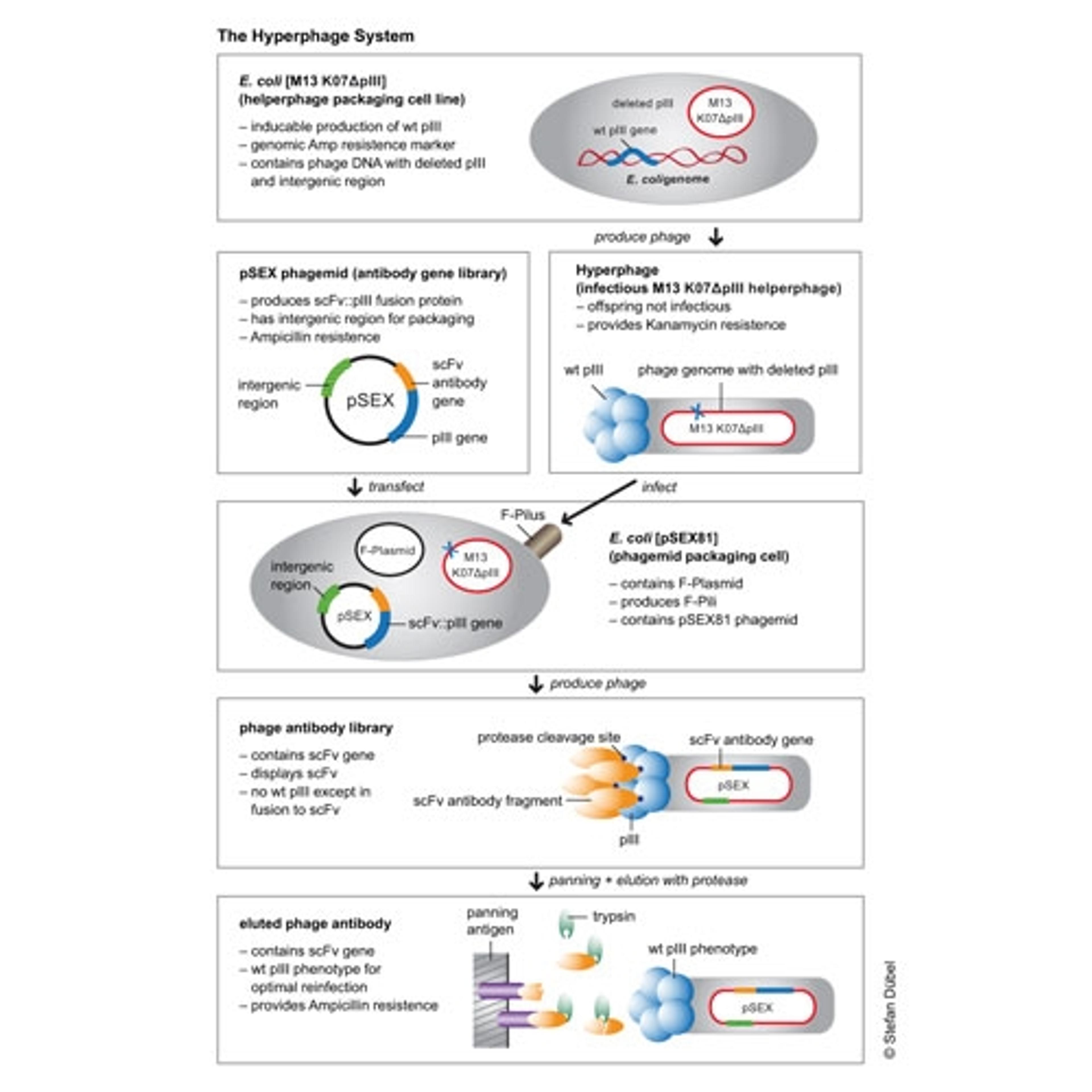Hyperphage M13 K07ΔpIII (5x2mL)
Provides helper phage function in packaging a common phage display phagemid. Infection of bacteria via pIII. Discover more about the hyperphage system here.

The supplier does not provide quotations for this product through SelectScience. You can search for similar products in our Product Directory.
An Effective Tool for the Isolation of Recombinant Antibodies, Proteins or Peptides from Hyperphage-Packed Libraries.
Advantages
- increases panning efficiency
- allows panning with reduced amount of panning antigen
- identifies high and low affinity binders
A helper phage technology ("Hyperphage System") was developed by Rondot et al. (Nature Biotechnology 19:75-81, 2001). The Hyperphage System allows to improve antibody presentation in phage display by increasing the number of antibodies displayed per phage particle (up to 5 vs. 0.01) and thereby the system offers great advantage in the fields of functional gene analysis and proteomics. Panning of phages can be performed with small amounts of antigen and higher efficiency. For example, the application of universal libraries for antibody isolation can be improved by employing panning of hyperphage-packed libraries on blots of protein spots after 2-dimensional gel electrophoresis.
More Applications
Large numbers of open reading frames (ORFs) can be analyzed by panning against synthetic membrane- bound peptide epitopes. In cancer research, the hyperphage-packed library could be a tool to discover new tumour markers by panning against cellular surfaces.
The Hyperphage System
Hyperphages carry a deletion in the pIII gene. They are generated by an E. coli packaging cell line producing functional pIII which is used to package a phage genome with a pIII deletion. The resulting hyperphages carry functional pIII on their surface but lack the pIII gene in their genome. These hyperphages can then be used to infect bacteria with a phagemid library. Each of the resulting display phages carries several copies of the antibody or peptide on its surface, thus dramatically increasing panning efficiency.
Example with pSEX Phagemid Antibody Gene Library
Antigen binding was enhanced by more than two orders of magnitude by using hyperphage. Further, since the antibody carrying plasmid (phagemid) encodes a protease cleavage site between pIII and scFv fragment, the hyperphage-packed library can be eluted by protease treatment, allowing to elute the highest affinity binders, plus restoring wild-type infectivity phenotype to optimize the recovery of the antibody gene of interest.





